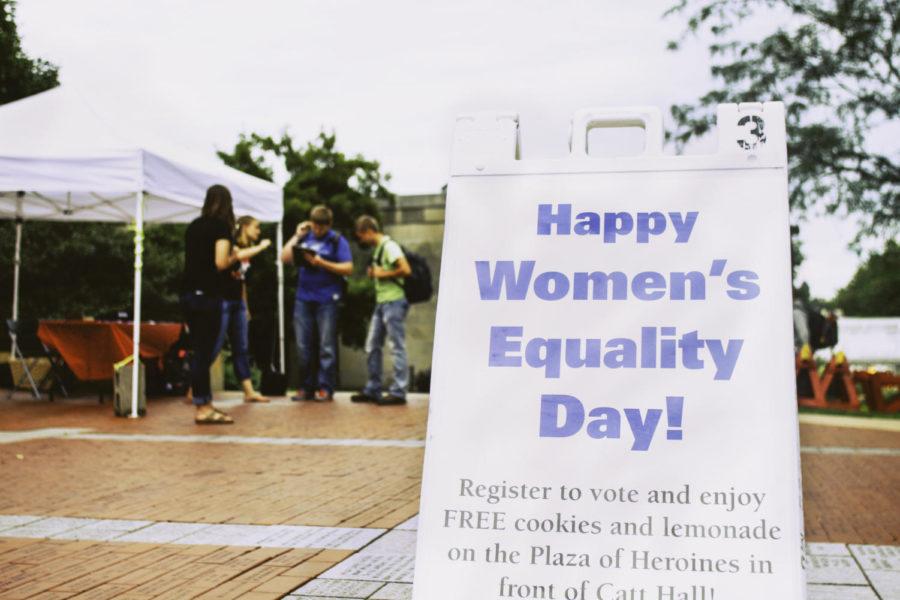Catt Center observes 19th Amendment anniversary
August 25, 2014
Women’s suffrage supporters in the early 20th century were often heard chanting, “For the work of a day, for the taxes we pay, for the laws we obey, we want something to say!”
That sentiment was echoed Aug. 26 when the Carrie Chapman Catt Center for Women and Politics hosted its annual Women’s Equality Day in front of Catt Hall as it celebrated the ratification of the 19th Amendment. This month marks the 94th anniversary of women gaining the right to vote.
Buttons, stickers and cookies were distributed to curious passers-by as the volunteers offered the opportunity to register to vote and handed out information about women’s suffrage.
“We think voting is very important,” said Kristine Keil, Catt Center student programs coordinator. “We reach out to students associated with Catt Center programs, such as the ISU [Democrats], the ISU College Republicans and the GSB to help us.”
Carrie Chapman Catt, an 1880 ISU graduate, served twice as the president of the National American Women’s Suffrage Association. She was president of the NAWSA in 1919 when the final, successful push was made to send the 19th Amendment through Congress.
She dedicated 33 years of her life to the cause of women’s suffrage.
Natalie Hanson, sophomore in biological systems engineering, volunteered for the event to help protect women’s rights.
“I think it’s important to be involved and do our duty as citizens,” Hanson said. “I think sometimes we take [voting] for granted when it’s always been there for you. This is a great way to get involved and make a difference.”
Women’s suffrage began more than 70 years prior to the passage of the 19th Amendment. Amy Bix, a professor of U.S. women’s history, said there are some misconceptions about the movement.
“It wasn’t a matter of men versus women; there were plenty of men who supported women’s right to vote,” Bix said. “What people don’t expect is that there were plenty of women who didn’t think women should vote. For them, it was a burden they didn’t want.”
Women have voted in greater numbers than men since 1964, yet only 18.3 percent of the U.S. Congress and 24.2 percent of state legislatures nationwide are women.







